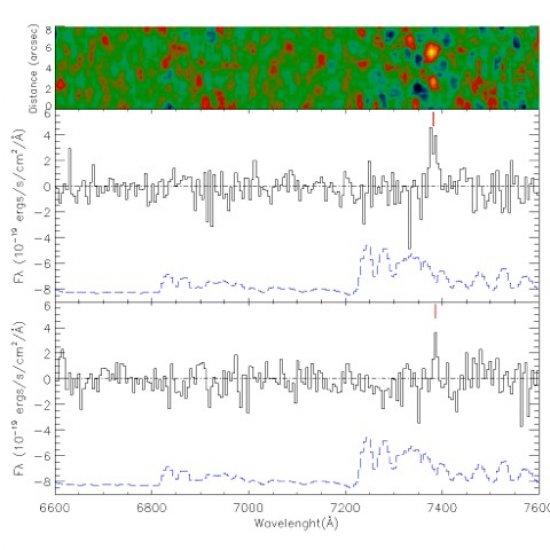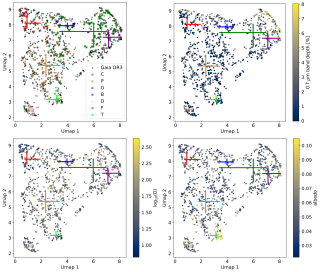We are undertaking a search for high-redshift low-luminosity Lyman Alpha sources in the SHARDS (Survey for High-z Absorption Red and Dead Sources) survey. Among the pre-selected Lyman Alpha sources two candidates were spotted, located 3.19 arcsec apart, and tentatively at the same redshift. Here, we report on the spectroscopic confirmation with Gran Telescopio Canarias of the Lyman Alpha emission from this pair of galaxies at a confirmed spectroscopic redshifts of z=5.07. Furthermore, one of the sources is interacting/merging with another close companion that looks distorted. Based on the analysis of the spectroscopy and additional photometric data, we infer that most of the stellar mass of these objects was assembled in a burst of star formation 100 Myr ago. A more recent burst (2 Myr old) is necessary to account for the measured Lyman Alpha flux. We claim that these two galaxies are good examples of Lyman Alpha sources undergoing episodic star formation. Besides, these sources very likely constitute a group of interacting Lyman Alpha emitters (LAEs).
Figure: GTC/ORISIS Spectroscopy. Upper Panel: 2-D spectral image. Center Panel: Obj1. Lower Panel: Obj2. The Lyα lines, marked with a red line, are clearly seen in both spectra. The blue dashed line, at the bottom of each frame, shows an off-scale sky sp
Advertised on
References



